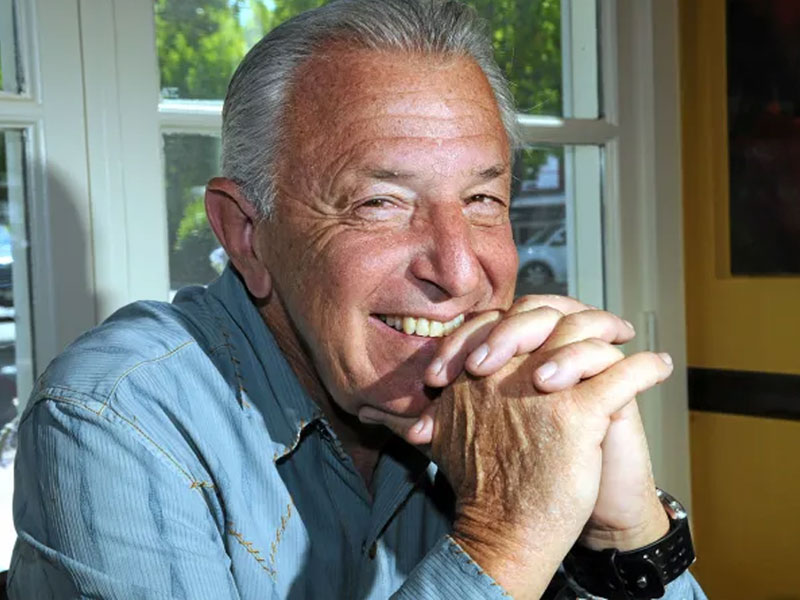UK becomes first to approve Casgevy genetic therapy for blood disorders
SOURCE: HTTPS://INTERESTINGENGINEERING.COM/
NOV 17, 2023
A woolly way to ‘save humanity’
SOURCE: MARINIJ.COM
SEP 18, 2021

Frankie Frost/Marin Independent Journal Barry Tompkins
I am to technology what Orville and Wilbur Wright were to a lunar module. That is to say, I know how to open a laptop computer, I’m reasonably good at utilizing the space bar and I am keenly knowledgeable of how to write and receive an email. Beyond that, I’m pretty much at the mercy of the Genius Bar.
So, when I read this week that a company called Colossal was in the process of bringing back an animal that last strode the Earth 10,000 years ago, by means of something called genome engineering, my interest was, needless to say, piqued.
I thought, here’s an opportunity to pull down an encyclopedia-like tome that my parents gave me when I was about 10 years old called the “Book of Knowledge,” and read up on this whole genome engineering phenomena. Of course, the “Book of Knowledge” had no knowledge of the word “genome.” Nor did it know anything about space bars, Genius Bars or computers for that matter. To say that the “Book of Knowledge” I’ve been hanging on to for all these years is outdated is the equivalent of asking if you think the zoot suit I just bought is cool.
This technology has come about by a process called CRISPR. When I first saw the name I thought, “I should get one of these. Must make a great salad.” But just when I was thinking of whether or not I wanted anchovies in my dressing, I come to learn that what this gizmo does is only slightly more complex than making the perfect Caesar. CRISPR is a gene-editing technology that acts like a molecular blade, slicing DNA apart, and adding and subtracting genes at will.
Now what am I going to do with all these anchovies?
By 2027, Colossal plans to have a living, breathing, hybrid of an elephant and a woolly mammoth wandering around northern Russia, with an eye toward saving humanity. Now I can’t speak for you, but my peanut mind simply can’t wrap itself around the prospect of a technological breakthrough that has already unraveled the DNA of an extinct animal that last roamed the earth in the Ice Age. Moreover, it plans to somehow combine it with the DNA of an Asian elephant in an artificial elephant womb after which it is cared for by a surrogate elephant mom.
Now to the “saving humanity” part. The idea is that the genes of the woolly mammoth that code for extra fat, dense hair and improved oxygen-carrying capabilities in blood will allow them to survive in the frozen north. So, after a test drive in a special 60-mile area in northern Russia, the plan is to (you might want to take a few notes here) turn these “mammophents” loose in the Arctic tundra whereupon they will trample the snow and knock down trees that in turn restores the grasslands that reflect the sun’s rays, thus eliminating insulating snow and forests. The ground still stays frozen but prevents the release of carbon monoxide and methane greenhouse gasses, which if not controlled will total 260 to 300 million metric tons by 2300. My scientific response to this is, what does this possibly mean? Apparently the answer is, if not checked, it exacerbates weather extremes and other climate change problems.
All the while, CRISPR is working on bringing back the passenger pigeon and the Tasmanian tiger.
My immediate response is that I’m going to buy a ticket on a passenger pigeon to beat all those gasses out of town. As to the Tasmanian tiger, I don’t know what they have in mind to breed its DNA with, but might I suggest a parrot? I’m not sure what it would look like, but when it speaks, you’d listen.
In the meantime, I’m off to the Genius Bar to find out how to sell a nearly unused “Book of Knowledge” on eBay.
LATEST NEWS
WHAT'S TRENDING


Data Science
5 Imaginative Data Science Projects That Can Make Your Portfolio Stand Out
OCT 05, 2022

SOURCE: HTTPS://INTERESTINGENGINEERING.COM/
NOV 17, 2023
SOURCE: HTTPS://GENETICLITERACYPROJECT.ORG/
SEP 05, 2023
SOURCE: HTTPS://WWW.SCIENCEDAILY.COM/
AUG 07, 2023
SOURCE: HTTPS://WWW.SCIENCEDAILY.COM/
JUL 24, 2023
SOURCE: HTTPS://NEWS.MIT.EDU
JUL 20, 2023
SOURCE: BIOSPACE.COM
OCT 27, 2022